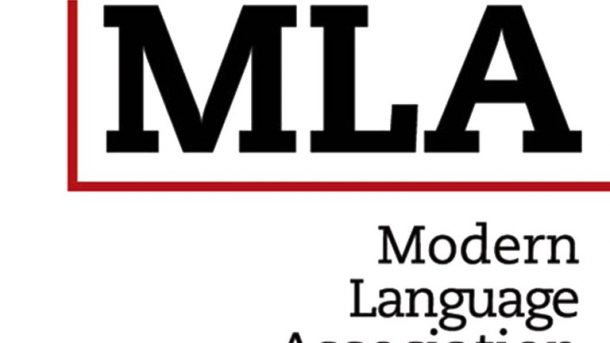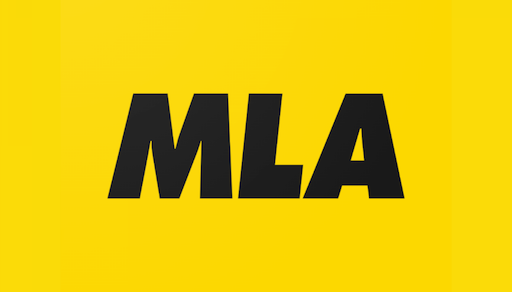The Modern Language Association (MLA) style is one of the most recognizable systems for writing and documenting academic papers in the humanities. Known for its focus on clarity, readability, and accessibility, MLA has evolved for nearly a century, adapting to the changing nature of research, technology, and communication. Its evolution is not merely a history of formatting guidelines but a reflection of the intellectual and cultural shifts within academia itself.
This essay explores the historical development of the MLA style — tracing its roots, major transformations across editions, and the deeper reasons behind each shift. It also examines how these changes have influenced education, writing practices, and academic publishing, shaping how students and scholars communicate ideas in the 21st century.
From Tradition to Standardization: The Early Years of MLA
The Modern Language Association of America was founded in 1883, primarily as a scholarly society for linguists and literary researchers. For decades, its main function was organizing conferences and publishing academic journals. However, by the early 20th century, the rapid expansion of universities and the democratization of education created a growing need for consistency in student writing and scholarly publication.
Before MLA guidelines existed, academic writing in the humanities was a chaotic landscape. Each university, journal, or professor might have their own preferences for how to cite a source, format a title page, or number pages. This lack of standardization caused confusion and hindered the development of a shared academic language.
The first MLA Style Sheet, published in 1951, was an attempt to bring order to that chaos. It was just a few pages long, printed in PMLA (Publications of the Modern Language Association), and focused mostly on citation principles — how to document books, journals, and primary sources. Its main goal was clarity and scholarly integrity: to make sources easy to locate and verify.
During the postwar academic boom of the 1950s and 60s, as literature and language programs expanded in American universities, MLA quickly became the default standard for humanities research. The association published its first comprehensive handbook in 1977, authored by Joseph Gibaldi and Walter Achtert, titled MLA Handbook for Writers of Research Papers. This was a turning point — MLA had transformed from a brief style sheet into a full pedagogical tool.
The tone of the early handbook reflected the academic culture of the time: formal, prescriptive, and text-centered. It emphasized uniformity and the authority of print sources. Footnotes were rare, endnotes were preferred, and the bibliography — titled “Works Cited” — was designed to foreground the act of writing as scholarship.
The Digital Turn: Adapting to New Media and Global Academia
By the late 20th century, technology began to reshape the academic landscape. Computers, online databases, and the internet revolutionized how students and scholars conducted research. The MLA style, rooted in print culture, had to evolve or risk irrelevance.
The fourth (1995) and fifth (1999) editions of the MLA Handbook began to address electronic sources for the first time. However, these early attempts were tentative. The fifth edition introduced the “URL” field but also advised writers to include the date of access, reflecting uncertainty about the permanence of digital materials.
By the sixth edition (2003), MLA acknowledged that digital literacy had become a key academic skill. The new guidelines encouraged concise entries, removed redundant punctuation, and introduced a more flexible approach to documenting electronic materials. This change mirrored a larger cultural shift: the movement from fixed, printed texts toward dynamic, hyperlinked sources.
The seventh edition (2009) marked a pivotal moment in MLA history. It introduced italicization instead of underlining for titles — a subtle but symbolic acknowledgment that most writing was now produced and read on screens. It also recognized multimodal texts — films, digital art, podcasts — as legitimate academic sources. The idea of authorship itself expanded: no longer was the “author” always a single person. Groups, institutions, and even digital platforms could be credited as creators.
These changes reflected a philosophical evolution. MLA was no longer simply about rules; it became about responsiveness — adapting to how knowledge was actually produced and shared in modern scholarship.
Table 1: Evolution of MLA Style Across Key Editions
| Edition | Year | Major Innovations | Cultural/Technological Context |
|---|---|---|---|
| 1st (Style Sheet) | 1951 | Basic print citations, focus on author and title | Post-WWII academic expansion; print dominance |
| 1st Handbook | 1977 | Full handbook introduced; “Works Cited” list standardized | Growth of humanities education in universities |
| 4th Edition | 1995 | First mention of electronic sources | Early internet era; digitization of libraries |
| 5th Edition | 1999 | URLs and access dates introduced | Rise of online databases and early web |
| 6th Edition | 2003 | Streamlined punctuation; expanded electronic citations | Web normalization; user-friendly formats |
| 7th Edition | 2009 | Italics replace underlining; film and media included | Screen reading becomes standard; multimedia learning |
| 8th Edition | 2016 | Core elements model; simplified universal template | Globalization of academia; need for flexibility |
| 9th Edition | 2021 | Emphasis on clarity, inclusivity, and digital adaptability | Remote learning, online publishing, open-access culture |
The Core Elements Revolution: From Rules to Principles
The eighth edition of the MLA Handbook (2016) represented the most radical transformation in the style’s history. It shifted the focus from prescriptive formatting to a modular, principle-based system known as the “core elements model.”
Previously, MLA gave specific formats for each type of source: a book, a journal, a film, a webpage. The eighth edition replaced this with a universal template that could apply to any kind of source — print, digital, hybrid, or even future media that didn’t yet exist. Each entry now consisted of nine “core elements” (Author, Title, Container, Version, Number, Publisher, Publication Date, Location, etc.), to be applied as relevant.
This change marked a philosophical shift in how MLA viewed authorship, research, and scholarship. The focus moved from memorizing citation forms to understanding relationships between sources. Instead of telling students exactly where to place commas or parentheses, MLA began teaching them to think critically about information — to evaluate how a source fits into a larger research conversation.
The new model also reflected globalization. Students and scholars from different linguistic and cultural backgrounds were publishing in English, often across digital platforms. A universal, flexible system made the style more accessible worldwide.
In pedagogical terms, this reform was revolutionary. It aligned MLA with contemporary education’s emphasis on critical thinking and information literacy rather than mechanical correctness. Teachers began using MLA not just to grade papers, but to teach citation as a tool for ethical communication — a way of acknowledging intellectual labor and respecting authorship across cultures.
The Modern MLA: Accessibility, Inclusion, and the Digital Future
The ninth edition (2021), the most recent version to date, continued this evolution with a renewed emphasis on accessibility, inclusivity, and digital adaptability. Emerging during a period defined by remote learning and online scholarship, it sought to simplify the research process for a generation raised on technology.
The ninth edition clarified ambiguous rules, standardized digital citations, and added examples for diverse media — from YouTube videos to social media posts and online exhibitions. Yet, its most significant contribution was philosophical: it explicitly connected citation practices with ethical and inclusive communication.
The style now recognizes that language evolves and that writing should respect diversity — in gender, culture, and identity. For instance, the ninth edition encourages writers to avoid bias, to include preferred pronouns when citing authors, and to consider accessibility when formatting tables or visual elements.
This marks a new era in MLA’s evolution — one that integrates not just technological change, but social awareness. The modern MLA style reflects the idea that academic writing is not isolated from cultural dynamics; it is an active participant in shaping them.
In this sense, MLA has become more than a formatting system. It has become a pedagogical philosophy — a way to teach clarity, respect for sources, and adaptability in a world of rapid information exchange.
Conclusion: Why MLA Keeps Changing — and Why It Matters
The story of MLA is a story of adaptation. From the typewritten papers of the 1950s to the digital classrooms of today, MLA has evolved in step with how knowledge is created, shared, and preserved. Each edition of the MLA Handbook has responded not just to new technologies, but to deeper cultural questions: What does authorship mean? How do we define credibility? How do we balance tradition with innovation?
The persistence of MLA through decades of academic transformation proves its resilience. It has managed to remain relevant by shifting focus from static rules to dynamic principles. Instead of dictating, it now educates — turning citation from a mechanical chore into a mindful act of scholarly respect.
In the digital age, when information is infinite and authorship diffuse, MLA’s core mission — to promote transparency, precision, and ethical engagement with sources — has never been more vital. The evolution of MLA reminds us that academic writing is not a fossilized tradition but a living, evolving conversation. And in that conversation, the MLA style remains one of its clearest, most enduring voices.




